
Picking the best office chairs for back support isn’t just about comfort—it’s about keeping your back healthy. Whether you work from home or in an office, the chair you sit in can make a big difference in how your back feels. In this guide, we’ll explore what makes a chair good for supporting your back and recommend some of the best options available.

When looking for an office chair that provides good back support, consider these important features:
Choosing an office chair with these features tailored to support your back can significantly improve your comfort and reduce the risk of back pain associated with prolonged sitting.

The Style chair from Meet&Co Office Furniture stands out with its sturdy construction and ergonomic features tailored for optimal back support. It offers a high-back design with robust lumbar support that maintains the natural curve of the spine. The mesh back provides breathability, while the seat cushion is firm yet supportive. With adjustable height and armrests, this chair ensures customizable comfort to prevent back strain during extended periods of sitting.
This leather chair combines luxurious comfort with robust back support and is suitable for long hours at the desk. It features a plush, padded, high-back design that supports both the upper and lower back regions. The chair offers adjustable lumbar support and a reclining feature for added relaxation. Upholstered in premium leather or high-quality fabric, it provides a stylish addition to executive offices while prioritizing ergonomic support and durability.

The Budding Chair is designed for practicality and comfort, making it an excellent choice for busy work environments. It features a supportive mid-back design with integrated lumbar support to alleviate lower back strain. The chair offers adjustable height and a flexible backrest that adapts to your movements, enhancing overall comfort and reducing the risk of back discomfort. Its durable construction and ergonomic features make it suitable for various tasks and users.
These reviews highlight the diverse range of office chairs available, each offering unique features designed to support your back and enhance comfort during prolonged periods of sitting.
Choosing the right office chair for optimal back support involves considering several key factors:
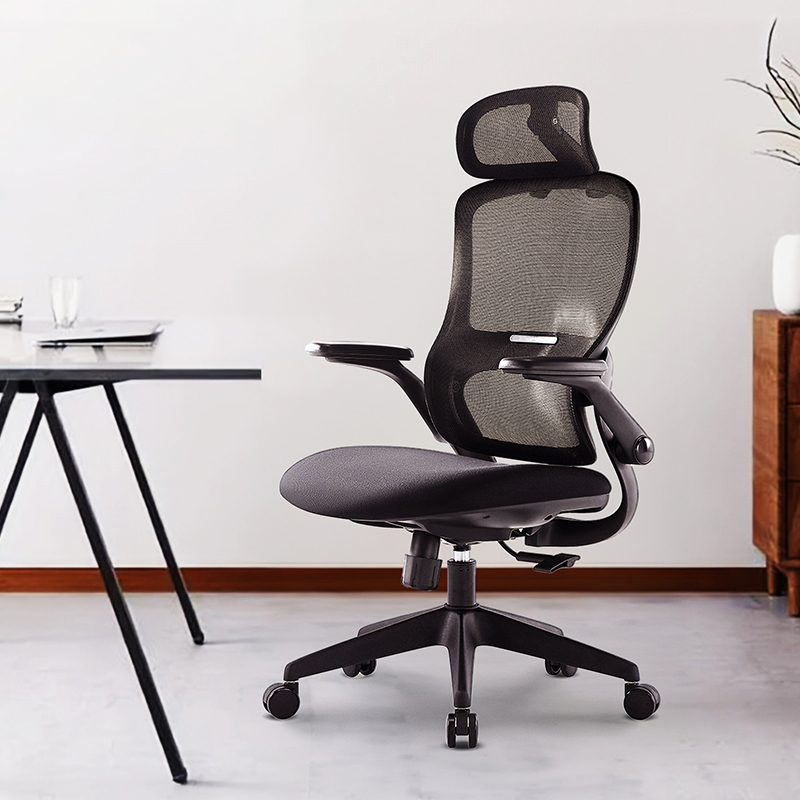
office meeting room chairs
Finding the best office chair for optimal back support can be done through various reliable sources:
Choosing the right place to purchase your office chair ensures you find a chair that not only supports your back effectively but also meets your comfort and ergonomic requirements for a productive work environment.
Look for chairs with adjustable lumbar support that can be positioned to fit the curve of your lower back. Ergonomic designs with firm backrests and adequate padding also help maintain proper spine alignment.
Mesh chairs are often preferred for back support due to their breathable material, which helps regulate temperature and provides good support. However, leather chairs can also offer adequate support if they are designed with ergonomic features and proper lumbar support.
To prevent back pain, ensure your chair supports your lower back and promotes good posture. Take breaks to stretch and move around regularly, and adjust your chair and workstation ergonomically to reduce strain on your back muscles.
Choosing the best office chair for back support is essential for maintaining comfort and preventing back pain during long hours of work. By focusing on ergonomic features like adjustable lumbar support, ergonomic design, and quality materials, you can find a chair that supports your back effectively. Whether purchasing online, at a furniture store, or directly from manufacturers, prioritize comfort, support, and your specific ergonomic needs to enhance your overall well-being and productivity in the workplace.

Do you ever find yourself slouching at your desk, feeling uncomfortable or achy after a long day of work? Maintaining a good posture while sitting is crucial not only for preventing these issues but also for keeping your body healthy and productive. The right office chair can make a significant difference in how you feel throughout the day. By providing proper support and encouraging correct alignment, a good chair not only enhances your comfort but also supports your overall well-being. In this guide, we’ll explore what constitutes the best office chair for good posture and review some of the top options available. Whether you work from home or in a traditional office setting, choosing the right chair could be the key to feeling better and working more effectively.

Before diving into the specifics of office chairs, it’s essential to understand why good posture matters and how it can affect your health and productivity. Proper posture isn’t just about sitting up straight; it’s about maintaining the natural curves of your spine to reduce strain on muscles and ligaments. In an office setting, where many of us spend hours seated, the wrong chair can contribute to back pain, neck stiffness, and even long-term spinal issues. Let’s explore what constitutes good posture and why it’s crucial for your well-being.
Good posture refers to the position in which your body is correctly aligned while sitting or standing. This alignment supports the natural curvature of your spine, from the neck down to the lower back. When you maintain good posture, the bones of your spine are properly aligned, reducing stress on the ligaments and muscles that support the joints. This alignment also helps prevent fatigue and strain on your body, allowing you to work comfortably for longer periods.
Poor posture, on the other hand, can lead to a variety of health issues over time. Slouching or leaning forward excessively can strain the muscles in your back and neck, leading to discomfort and pain. Over time, this can contribute to chronic conditions such as backaches, headaches, and even more severe spinal problems. In an office environment, where many tasks require prolonged sitting, poor posture becomes a significant risk factor for musculoskeletal disorders. Understanding these impacts underscores the importance of choosing an office chair that supports and promotes good posture.

Now that we understand why maintaining good posture is crucial let’s explore the key features that make an office chair suitable for promoting proper alignment and comfort. A well-designed office chair should provide adequate support to your spine, encourage healthy sitting habits, and allow for adjustments that accommodate your unique body shape and size. Here’s a closer look at the essential features you should consider when choosing an office chair to support good posture.
Ergonomics plays a central role in the design of office chairs aimed at promoting good posture. An ergonomic chair is designed to fit the natural curvature of the spine and support the body’s weight evenly. Look for chairs with adjustable seat height and depth, as well as lumbar support that can be customized to fit the curve of your lower back. These features help maintain the spine’s natural alignment and reduce the risk of slouching or hunching forward.
The materials used in an office chair can impact both its comfort and longevity. Chairs with high-quality padding provide better cushioning and support, reducing pressure points and enhancing overall comfort during extended sitting. Additionally, durable materials such as mesh or high-grade upholstery ensure that the chair remains supportive and functional over time, even with daily use. Choosing a chair made from sturdy materials ensures that it will continue to provide adequate support for your posture throughout its lifespan.
Choosing the right office chair can be overwhelming with the multitude of options available. To help you make an informed decision, we’ve reviewed three highly regarded office chairs that prioritize comfort, support, and ergonomic design. Each chair offers unique features aimed at promoting good posture and enhancing your overall sitting experience.

The Budding chair provides excellent lumbar support and adjustable features that cater to different body types. Its ergonomic design ensures proper alignment of the spine, reducing the strain on your back and neck muscles. The breathable mesh back keeps you cool during long work sessions, while the cushioned seat provides comfort without compromising on support. Recommended for those seeking a versatile chair that adapts to various sitting preferences and promotes long-term spinal health.

The Style Chair from Meet&Co Office Furniture stands out for its robust build quality and extensive adjustability options. It features a contoured backrest that supports the natural curve of your spine and a high-density foam seat that offers firm yet comfortable seating. The adjustable armrests and tilt mechanism allow you to find the perfect position for optimal comfort and posture support throughout the day. Ideal for individuals looking for a durable chair with customizable features that prioritize both comfort and ergonomic support.
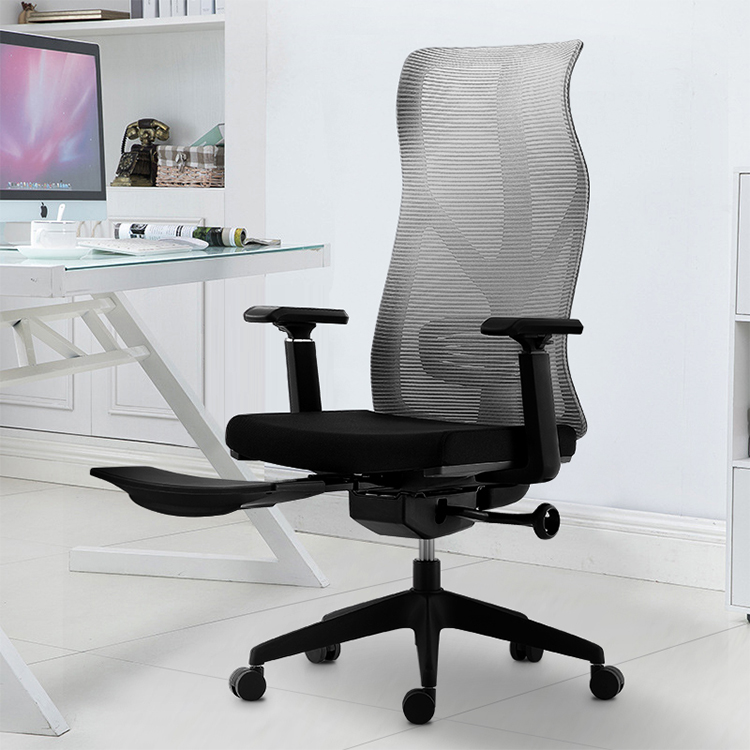
This stylish office chair combines sleek design with ergonomic functionality, making it a stylish addition to any office space. It features a waterfall seat edge that promotes better circulation in the legs and a supportive backrest that encourages upright posture. The chair’s intuitive adjustments, including seat height and lumbar support, ensure personalized comfort tailored to your specific needs. Recommended for those who value aesthetics alongside ergonomic benefits, offering a blend of comfort, style, and functionality in one package.

Selecting the best office chair for your needs involves considering several factors beyond basic comfort. A chair that promotes good posture and supports your body’s natural alignment can enhance productivity and prevent long-term health issues. Here’s a comprehensive buying guide to help you navigate the options and choose an office chair that suits your unique requirements.
Consider your body type when selecting an office chair. Look for chairs that accommodate your height and weight comfortably. Adjustable features such as seat height, seat depth, and armrest height are essential for ensuring proper support and alignment for different body sizes.
Opt for an office chair with multiple adjustment settings. Adjustable features like lumbar support, backrest tilt, and armrests allow you to customize the chair to fit your body and preferences. This adaptability promotes better posture and reduces the risk of discomfort or strain during prolonged sitting.
Set a budget based on your needs and priorities. While premium office chairs often offer superior ergonomic features and durability, there are budget-friendly options that provide adequate support and comfort for everyday use. Evaluate the features that matter most to you and choose a chair that strikes a balance between affordability and functionality.
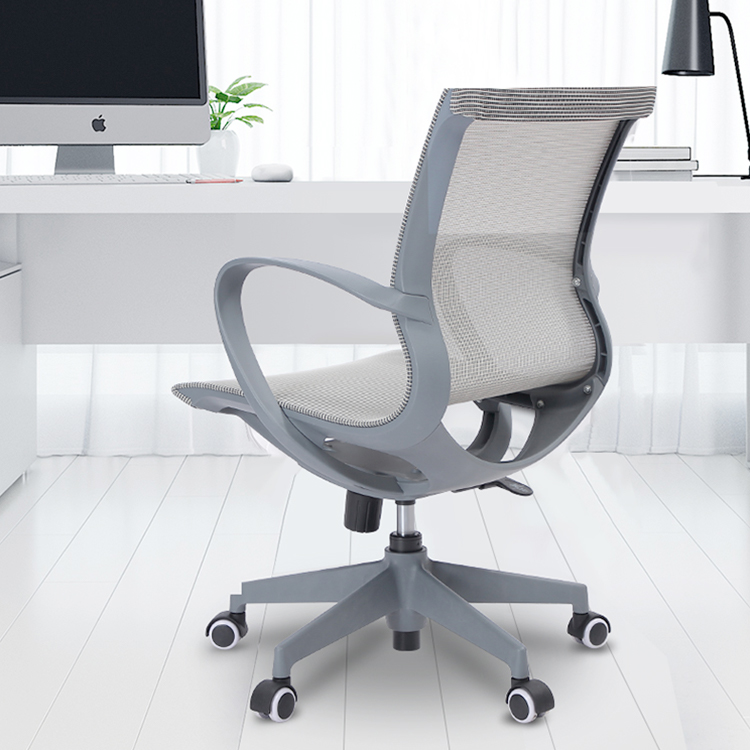
Maintaining good posture is not solely reliant on your office chair; your workspace setup and habits also play a crucial role. Follow these tips to support healthy posture habits throughout your workday, enhancing comfort and reducing the risk of strain or injury.
Ensure your office desk and chair are at the correct height to promote good posture. Your elbows should be at a 90-degree angle when typing, and your computer screen should be at eye level to prevent neck strain. Use a footrest if needed to support your feet and legs comfortably.
Take breaks throughout the day to stand up, stretch, and move around. This helps prevent stiffness and encourages blood circulation. Simple stretching exercises for the neck, shoulders, and back can alleviate tension and promote flexibility.
Avoid prolonged periods of sitting in one position. Shift your weight, adjust your posture, and walk around periodically to keep your muscles active and engaged. Incorporate short walks or stretches into your routine to break up sedentary periods.
Look for chairs that offer adjustable features such as seat height, lumbar support, and armrests. An ergonomic chair should support the natural curve of your spine and allow you to maintain a comfortable, neutral posture throughout the day.
Effective lumbar support should be adjustable to fit the curve of your lower back. It should provide firm support without being too hard or too soft, helping to maintain the natural S-shape of your spine.
Both mesh and padded chairs have their advantages. Mesh chairs provide better breathability, which can be beneficial if you tend to get hot while sitting. Padded chairs offer more cushioning and may feel more comfortable for extended periods of sitting.
It’s a good idea to adjust your chair whenever you change tasks or notice discomfort. Regularly checking and adjusting your chair’s settings ensures that you maintain proper posture and comfort throughout the day.
Choosing the best office chair for good posture is an investment in your health and well-being. A chair that supports proper alignment and ergonomic comfort can reduce the risk of musculoskeletal issues and enhance your overall productivity. By understanding the principles of good posture, selecting a chair with the right features, and maintaining healthy sitting habits, you can create a supportive workspace that promotes long-term physical health and comfort. Whether you opt for a chair with advanced ergonomic adjustments or prioritize affordability, prioritize your comfort and health when making your choice.

Finding the right office chair isn’t just about comfort—it’s about making sure the chair supports your body properly, especially if you’re larger in size. Many standard office chairs aren’t designed with larger individuals in mind, which can lead to discomfort and even health issues over time. In this guide, we’ll explore how to choose the best office chairs for large people, focusing on what features to look for to ensure comfort and support.

When you’re larger, fitting comfortably into a standard-sized chair can be a challenge. The seat may feel too narrow or shallow, causing discomfort during long hours of sitting. Moreover, the weight capacity of the chair is crucial. Standard chairs may not be sturdy enough to support larger individuals comfortably and safely. This can lead to concerns about durability and the chair’s ability to provide proper support over time.
Understanding these challenges is the first step in selecting a suitable office chair. By choosing a chair that addresses these specific needs, you can enhance your comfort and productivity at work while also supporting your overall well-being. In the following sections, we’ll delve into the key features and considerations that will help you find the perfect office chair for your needs.
When selecting an office chair for larger individuals, certain features can make a significant difference in comfort and support:

The material and build quality of an office chair can significantly impact its comfort, durability, and overall performance:
By prioritizing these features and qualities, you can select an office chair that not only fits your size but also enhances your comfort and supports your well-being throughout the workday.
Consider your budget when choosing an office chair for larger individuals. While quality ergonomic chairs can be an investment, they are worth it for the comfort and support they provide over time. Here are some budget considerations:
When looking to purchase office chairs specifically designed for large people, consider these options:
When buying office chairs for larger people, consider factors like weight capacity, ergonomic features, and the durability of materials to ensure you select a chair that provides both comfort and long-term support.
Look for chairs with wide and deep seats to accommodate your body comfortably. Ensure the chair has a high weight capacity that exceeds your weight. Adjustable features such as seat height, lumbar support, and armrests are crucial for customizing the chair to fit your body properly.
Check the chair’s specifications, particularly the seat dimensions and weight capacity. Chairs designed for larger individuals typically have wider seats (20-24 inches or more) and can support weights ranging from 250 pounds up to 500 pounds or more.
Ergonomic features such as adjustable lumbar support, seat height adjustment, and armrests help maintain proper posture and reduce strain on the body. They promote comfort during long hours of sitting and can contribute to overall well-being and productivity.
Both types of chairs can be suitable, depending on personal preference. Mesh chairs offer breathability and airflow, which can be beneficial for staying cool during extended sitting. Cushioned chairs provide plush comfort and may be preferred for those who prioritize softness and support.
While specific brands vary, look for those known for their ergonomic designs and durability, such as Meet&Co Office Furniture. Some brands specialize in chairs for larger people, offering a wider range of options to suit different needs and preferences.
Consider the dimensions of the chair, including its height and width, to ensure it fits well within your workspace. Measure your desk height to ensure the chair can be adjusted to the appropriate height for comfortable typing and viewing of your computer screen.
If you experience discomfort, adjust the chair’s settings to better fit your body. Ensure proper posture with feet flat on the floor or on a footrest, and take regular breaks to stretch and move around. If discomfort persists, consider consulting an ergonomic specialist for personalized advice.
Regularly clean the chair according to the manufacturer’s instructions to maintain its appearance and functionality. Inspect for any signs of wear and tear, such as loose screws or worn-out padding, and address them promptly to prolong the chair’s lifespan.
With over 15 years of experience in the furniture industry, Meet&Co Office Furniture specializes in designing and making comfortable office chairs, desks, storage solutions, and more. We understand different people’s needs and work styles well, so our furniture is crafted to be very comfortable and practical. We are dedicated to making products that improve productivity and well-being. Every piece of furniture we create is carefully designed to support your body and make your workspace better.
Our team is always working to make our ergonomic furniture even better. We use our knowledge to create solutions especially for larger people. Whether you need a strong chair or one you can adjust to fit you perfectly, our products are made to meet your needs. You can trust us to deliver high-quality furniture that makes your work more comfortable, lasts a long time, and improves your overall work experience.
Choosing the best office chair for larger people involves considering specific features like seat dimensions, weight capacity, adjustability, material quality, ergonomic support, additional features, and budget considerations. By prioritizing these factors and understanding your personal needs, you can select a chair that enhances comfort, promotes good posture, and supports your overall well-being in the workplace. Remember to test chairs if possible and seek out reputable brands known for producing ergonomic furniture tailored to larger individuals.
Explore our recommended office chairs for larger individuals to find the perfect fit for your workspace needs. Whether you prioritize comfort, durability, or style, investing in the right chair can make a significant difference in your daily work life.

In today’s dynamic work environments, flexibility and functionality are key. Foldable meeting tables offer an excellent solution for businesses and organizations that need to adapt their spaces quickly and efficiently. Whether you’re setting up a conference room, a training area, or a multi-purpose workspace, choosing the right foldable meeting tables can make all the difference. This guide explores essential factors to consider, from size and shape to material and additional features, helping you select the perfect table to meet your needs and enhance your workspace.
Before diving into specifics, it’s essential to pinpoint your primary requirements. Understanding how the table will be used and the demands of your space will guide you in making the best choice. From regular formal meetings to occasional collaborative sessions, knowing your needs will streamline the selection process and help you find a table that truly fits.
The dimensions and shape of the table play a significant role in its functionality and aesthetic appeal. It’s important to consider how the table will fit within your space and how its shape will affect seating arrangements and room flow. Evaluating these factors will ensure that your table is both practical and visually pleasing.

Material choice impacts not only the table’s appearance but also its durability and ease of maintenance. From laminate to wood veneer and metal, each material has its own set of benefits and drawbacks. Understanding these will help you select a table that withstands the demands of your environment while maintaining a professional look.
The ease with which a table can be folded and moved is crucial, especially in dynamic environments where space and functionality frequently change. Examining the folding mechanism and portability features will ensure that the table meets your needs for flexibility and convenience.

A stable and safe table is essential for effective meetings and work sessions. Assessing the stability of the table’s legs and the safety of its edges will prevent disruptions and accidents, ensuring a smooth and secure experience for all users.
Beyond basic functionality, additional features can significantly enhance the utility of a foldable meeting table. Whether it’s modularity, adjustability, or built-in accessories, these features can add considerable value and cater to specific needs in your workspace.
Balancing cost with quality is key when selecting a foldable meeting table. Understanding your budget constraints while evaluating the table’s features and durability will help you make a sound investment that aligns with your financial and functional requirements.
Gathering feedback from other users and considering brand reputation can provide valuable insights into the table’s performance and reliability. Reviews and recommendations can guide you toward a table that has proven effective and meets high standards.
A strong warranty and reliable customer support are vital for long-term satisfaction with your purchase. Ensuring that the table comes with adequate protection and accessible support will give you peace of mind and address any potential issues that may arise.
The visual appeal of the table should complement your meeting space’s design. From color and finish to overall style, selecting a table that enhances the room’s look while fulfilling practical needs will create a cohesive and professional environment.
By thoroughly considering these factors, you can make a well-informed decision and select a foldable meeting table that perfectly suits your needs, space, and budget.

Furnishing a small space can feel like a puzzle. With limited room to work with, every piece of furniture must be carefully chosen to balance style, functionality, and comfort. Modular couches are an excellent solution for small spaces because they offer flexibility and can be customized to fit various layouts. If you’re trying to find the perfect modular couches for small spaces, this guide will walk you through the process, from measuring your space to selecting the right features and style.

A modular couch consists of separate sections or modules that can be rearranged to fit different layouts. This flexibility makes them ideal for small spaces because you can adapt them to various needs and room shapes. Unlike traditional sofas, which come as a single unit, modular couches allow you to create a setup that works best for your space.
Before you start shopping, accurately measure your room to understand what will fit. Measure the following:
Think about how people will move around the room. Leave enough space for walking paths, and consider how the couch will impact the room’s functionality. Ensure that the couch doesn’t obstruct any essential areas or access points.
Determine how many people you need to seat regularly. Modular couches come in various sizes, from small sections that seat two people to larger configurations that can accommodate six or more. Choose a size that fits both your space and your needs.
Modular couches often come with additional features:
Select a style that complements your existing décor. Whether you prefer modern, minimalist, classic, or eclectic designs, there’s a modular couch that will fit your taste. Think about colors, patterns, and overall design to ensure it blends seamlessly with your home.
Check the modularity options available:
Ensure the modular couch is appropriately scaled for your space. A couch that is too large can overwhelm a small room, while one that is too small may not provide enough seating. Pay attention to the proportions and make sure the couch fits comfortably without crowding the room.
If storage is important, look for modular couches with hidden compartments or built-in shelves. These features help maximize the use of space and keep your room organized.
Consider modular couches that offer customization options. Removable covers, adjustable components, and various fabric choices allow you to tailor the couch to your specific needs and style preferences.
Choose a fabric that suits your lifestyle:
The type of cushioning affects comfort and durability:
Consider how easy the couch will be to maintain. Look for removable, washable covers or materials that can be easily spot-cleaned. Regular maintenance helps keep your couch looking new and extends its lifespan.

Ensure the modular couch complements your room’s décor:
Modular couches can fit various design themes:
Incorporating visual examples can help you visualize how different modular couches look in small spaces. Look for photos or diagrams showing various configurations and styles.
Modular couches come in a wide range of prices:
Consider what features are most important to you and balance your budget accordingly. Investing in a high-quality modular couch can be worthwhile for its durability and functionality.
Look for sales, discounts, or special promotions. Shopping during holiday sales or clearance events can help you find a great deal on a modular couch.
Choosing the right modular couches for a small space requires careful consideration of your needs, preferences, and the specific characteristics of your room. By understanding the features of modular couches, assessing your space, and considering factors like material and style, you can find a couch that enhances both the functionality and aesthetics of your home. Take your time to research and test different options to ensure you make the best choice for your space.

Wood file cabinets are more than just storage solutions; they are also key pieces of furniture that enhance the functionality and aesthetic of your workspace. With various types of wood and construction methods available, choosing the right file cabinet involves considering factors such as durability, cost, and design. This guide explores the different types of wood file cabinets, helping you find the perfect match for your needs.
Solid wood file cabinets are crafted from single pieces of wood, offering a high level of durability and classic appeal. These cabinets are typically made from hardwoods such as oak, cherry, or walnut, which are known for their strength and longevity.
Engineered wood file cabinets are made from composite wood products such as Medium Density Fiberboard (MDF) or plywood. These materials are created by binding wood fibers together using adhesives, resulting in a sturdy and versatile product.
Veneer wood file cabinets feature a thin layer of high-quality wood (veneer) applied over a base material, such as MDF or particleboard. This method provides the appearance of solid wood at a lower cost.

Reclaimed wood file cabinets are made from wood salvaged from old buildings, barns, or other structures. This wood is repurposed to create unique and eco-friendly furniture pieces.

Custom wood file cabinets are designed and built to meet specific requirements and preferences. These cabinets are tailored to fit particular dimensions, features, and design elements.
Selecting the right wood file cabinet involves understanding the different types of wood and construction methods available. Whether you prioritize durability, aesthetics, or cost, there is a wood file cabinet to meet your needs. By considering the benefits and considerations of each type, you can find the perfect file cabinet to enhance your office organization and style.

Choosing the right folding office chair can significantly impact your comfort, productivity, and the efficiency of your workspace. Whether you need extra seating for occasional use, a temporary workspace solution, or a chair that you can easily store away, selecting the right folding chair involves considering various factors. This guide will help you navigate these considerations to find the perfect folding office chair for your needs.
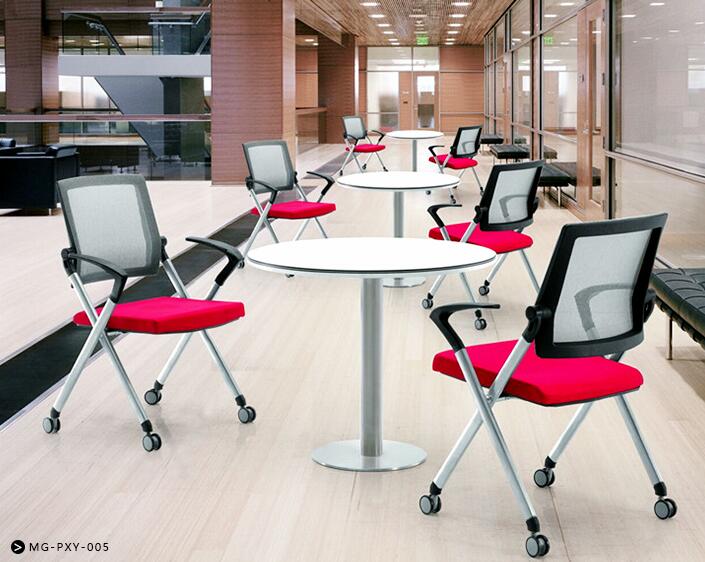

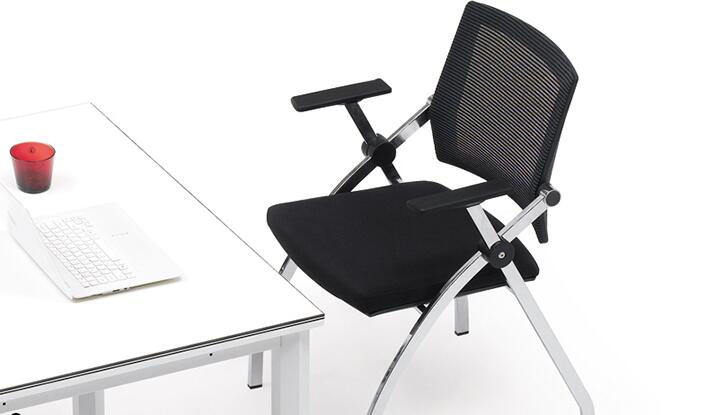
Choosing the right folding office chair involves considering comfort, build quality, style, and functionality. By assessing your needs and preferences, you can find a chair that fits seamlessly into your workspace while providing the support and convenience you need.

Selecting the right style for your L-shaped executive desk is more than just a matter of aesthetics. It plays a crucial role in shaping your office environment, enhancing your productivity, and reflecting your professional image. This guide will help you navigate the options and choose a desk style that best suits your needs and workspace.
The style of your L-shaped executive desk can significantly impact how you are perceived in a professional setting. A well-chosen desk not only enhances your personal image but also reflects your attention to detail and organizational skills. Whether you opt for a traditional wood finish or a sleek modern design, the desk style should project a sense of professionalism and competence.
The desk you choose will contribute to the overall look and feel of your office. An executive desk often serves as a focal point in the room, so selecting a style that complements or enhances your office decor is essential. A cohesive design helps create a welcoming and productive work environment.
Style is not just about appearance; it also affects functionality and comfort. A desk that suits your style preferences will likely enhance your overall comfort and work experience. For example, modern styles with clean lines and minimalistic designs can create a clutter-free workspace that promotes efficiency.

Traditional L-shaped desks feature classic designs, often crafted from rich woods like cherry or oak. These desks typically have intricate details and ornamental hardware. If you prefer a timeless and elegant look that conveys a sense of authority, a traditional desk may be the right choice. Its warm, classic appearance can add a touch of sophistication to your office.
Modern L-shaped desks are known for their sleek lines, minimalist designs, and contemporary materials. They often incorporate materials like glass, metal, and polished wood to create a clean and streamlined look. If you value simplicity and a forward-thinking aesthetic, a modern desk can enhance your office’s contemporary vibe and provide a functional workspace.
Industrial-style desks are characterized by their robust materials and unfinished look. They typically feature metal frames and reclaimed wood, offering a rugged and utilitarian appeal. This style is ideal if you want to add a distinctive, modern edge to your office or if you appreciate the combination of durability and unique design.
Transitional desks blend elements of both traditional and modern styles. They offer a versatile look that can adapt to various office settings. Transitional desks usually combine classic details with contemporary features, making them an excellent choice if you want a desk that bridges different design elements while providing flexibility.

Selecting the right style for your L-shaped executive desk involves balancing aesthetics with functionality. Consider how the desk will fit into your office space, reflect your personal taste, and meet your practical needs. With the right choice, you can create a workspace that is both stylish and efficient, enhancing your overall work experience.

When setting up a modern office, choosing the right furniture is crucial. Not only does it impact the look of your workspace, but it also affects comfort, productivity, and overall employee satisfaction. In 2024, with so many options available, finding the perfect contemporary office furniture manufacturer can be overwhelming. This guide will help you navigate the process, ensuring you make an informed choice that suits your needs and budget.
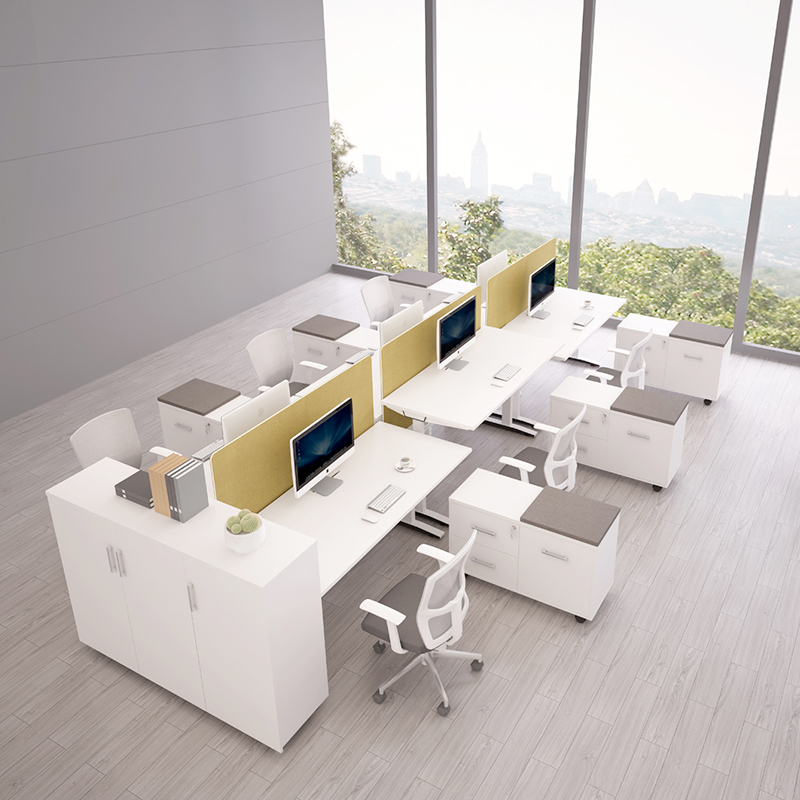
Before diving into the search for office furniture, it’s crucial to understand exactly what your office requires. Assessing your space, defining your style preferences, and setting a realistic budget will lay the foundation for a successful furniture hunt.
Before you start looking for furniture, take a good look at your office space. Measure the dimensions of your rooms, noting any unique features like windows or columns that might affect furniture placement. Think about how many people will be using the space and what kind of activities will take place there. For example, a collaborative area might need flexible seating arrangements, while individual workstations will require ergonomic desks and chairs.
Contemporary office furniture should not only look modern but also fit well with your office’s style. Decide on the look you want: minimalist, industrial, or perhaps a blend of modern and traditional elements. Functionality is just as important. Consider ergonomic features like adjustable chairs and desks to ensure comfort. Think about storage solutions, meeting room setups, and any other specific needs your office might have.
Setting a budget is essential. Office furniture can be a significant investment, so it’s important to know how much you can afford. Keep in mind that higher-quality furniture might come with a higher price tag, but it often lasts longer and provides better comfort and functionality. Balance your budget with the need for quality to get the best value for your money.
Finding the best contemporary office furniture manufacturer starts with thorough research. Online reviews, industry recommendations, and personal referrals are key to narrowing down your options and finding reputable companies.
Start by searching online for contemporary office furniture manufacturers. Look for companies that specialize in modern designs and have a strong online presence. Read reviews on their websites and third-party review sites to gauge customer satisfaction. Pay attention to ratings, feedback on product quality, and overall service.
Consult with industry professionals, such as interior designers or office planners. They can recommend reliable manufacturers based on their experience. Check trade publications and forums for expert opinions and recommendations. These sources often have insights into the latest trends and the most reputable companies in the industry.
Ask colleagues, friends, or business contacts if they have any recommendations. Personal referrals can be valuable as they come from trusted sources. Also, look at testimonials and case studies on the manufacturers’ websites. These can provide a glimpse into how other businesses have benefited from their furniture and services.
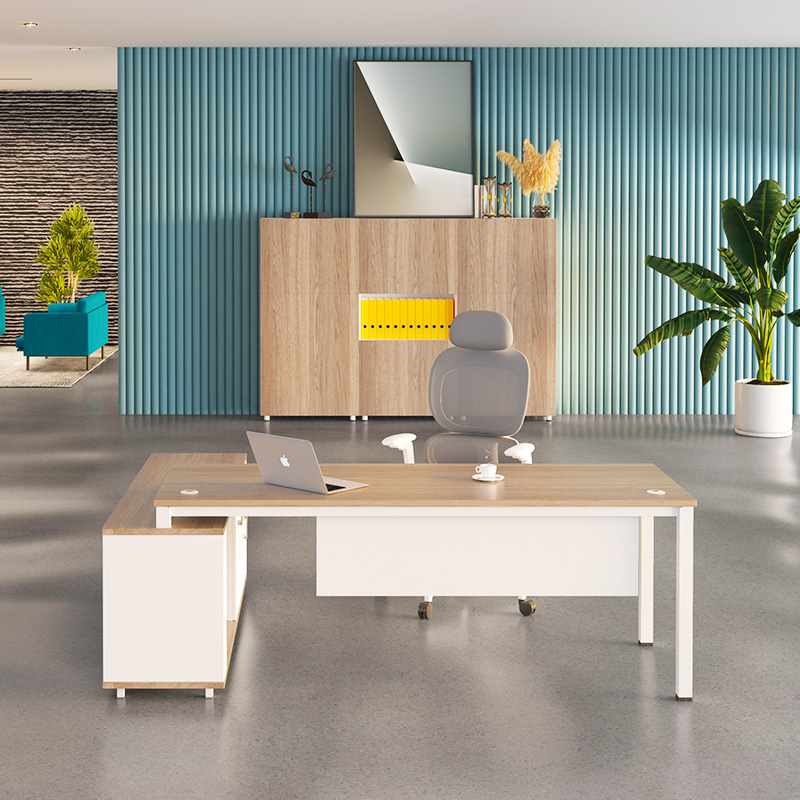
As you delve deeper into your search, evaluating the credentials of potential manufacturers becomes essential. Consider factors like experience, reputation, product quality, innovation, and adherence to industry standards.
Check how long the manufacturer has been in business. Established companies often have a track record of delivering quality products and services. Look for notable projects they’ve worked on and their client list. A strong reputation in the industry usually indicates reliability and expertise.
Assess the quality of the furniture they offer. Look for information on the materials used and the craftsmanship involved. Manufacturers that invest in innovation often provide cutting-edge designs and features. Check if their furniture incorporates modern technology or eco-friendly materials, as these can enhance functionality and sustainability.
Verify if the manufacturer has industry certifications like ISO or GREENGUARD. These certifications indicate that the company meets high standards for quality and safety. Compliance with health and safety standards is also important to ensure that the furniture is safe and durable.

Exploring a manufacturer’s product offerings is where your vision for a modern office takes shape. Look for a diverse range of furniture that blends contemporary design with functional efficiency, tailored to meet your office’s specific needs.
Evaluate the range of products the manufacturer offers. Do they provide a variety of office furniture, including desks, office chairs, and storage solutions? A wide range allows you to find everything you need from one supplier, simplifying the purchasing process. Check if they offer customization options to tailor furniture to your specific needs.
Review the manufacturer’s portfolio to see if their designs align with contemporary trends. Look for sleek, modern lines, innovative materials, and stylish finishes. The furniture should not only fit your office’s design but also enhance its overall look.
Functionality is key to a productive office. Ensure the furniture supports ergonomic practices, such as adjustable chairs and desks that promote good posture. Consider how well the furniture will accommodate different work styles and needs, like collaborative spaces or private workstations.
Balancing cost with quality is a critical step in choosing the right office furniture manufacturer. Compare prices, assess warranty options, and evaluate the overall value each manufacturer offers to ensure a smart investment.
Compare the prices of different manufacturers, but remember that cost should not be the only factor. Higher-priced furniture may offer better quality and durability, which can be more cost-effective in the long run. Weigh the price against the quality and features of the furniture to get the best value.
Check the warranty offered by the manufacturer. A good warranty provides peace of mind and protection against defects or issues. Also, consider the level of customer support available. Reliable support can be crucial for resolving any problems or making adjustments after purchase.

Seeing is believing when it comes to office furniture. Visiting showrooms or requesting samples allows you to touch, feel, and test the comfort and quality of potential pieces in your own office environment.
Whenever possible, visit showrooms to see the furniture in person. This allows you to test the comfort and quality firsthand. Assess the materials, finishes, and overall construction of the furniture. A showroom visit also gives you a sense of the manufacturer’s attention to detail and service.
If visiting a showroom isn’t feasible, request samples or mockups. Seeing materials and finishes in your office environment can help you make a more informed decision. Evaluate how the furniture fits with your existing décor and whether it meets your aesthetic and functional needs.
With proposals and contracts in hand, it’s time to make your final decision. Review all details carefully, check references, and ensure the manufacturer aligns perfectly with your office’s aesthetic and functional requirements.
Once you’ve narrowed down your choices, review the proposals and contracts carefully. Look for clear terms regarding pricing, delivery schedules, and any additional services. Make sure there are no hidden costs and that all your requirements are covered.
Before finalizing your decision, verify the manufacturer’s references and review past client experiences. Ensure that the manufacturer aligns with your initial needs and expectations. A final check helps confirm that you’re making the right choice for your office.
Finding the best contemporary office furniture manufacturer in 2024 involves careful consideration of your needs, thorough research, and a clear understanding of what different manufacturers offer. By following these steps, you can select a manufacturer that provides quality, stylish, and functional furniture for your office. Start your search today and create a workspace that enhances productivity and reflects your business’s modern aesthetic.

A wooden desk with drawers is a practical and stylish piece of furniture commonly found in homes and offices. It combines the functionality of a workspace with the storage capacity of drawers built into its structure. These desks are popular because they offer both a surface for tasks like writing, computing, or studying, and compartments to keep essential items organized and easily accessible.
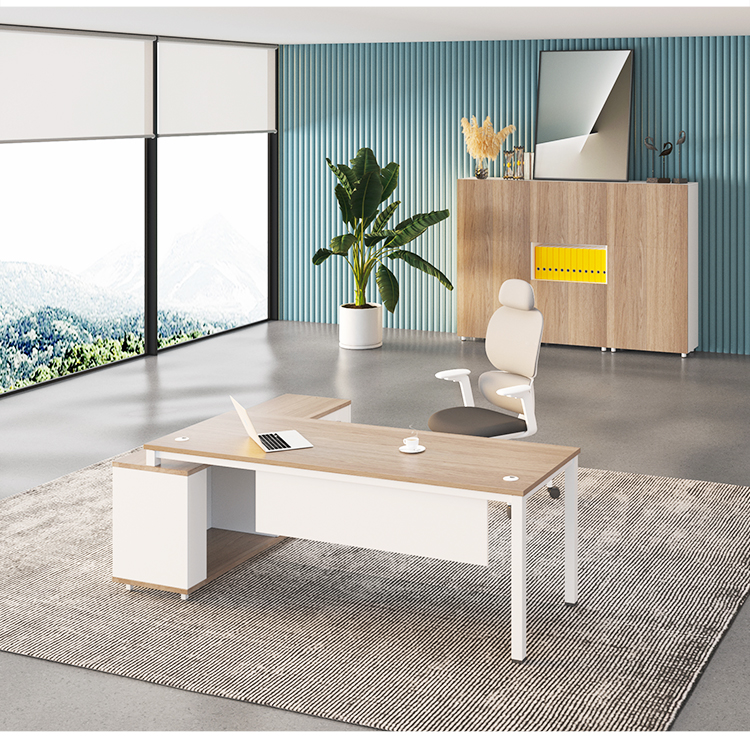
A wooden desk with drawers is a type of furniture designed for work or study purposes. It is typically made from different types of wood, such as oak, pine, or mahogany, which give it a sturdy and durable construction. The main feature that sets it apart from other desks is the inclusion of drawers integrated into its design.
The primary purpose of a wooden desk with drawers is to provide a designated area for work-related tasks while offering convenient storage space within arm’s reach. This makes it easier to keep important documents, stationery, and other essentials organized and readily available.
Wooden desks with drawers come in various designs, ranging from traditional to modern styles. Traditional designs often feature ornate details and solid wood construction, while modern designs may incorporate sleek lines and minimalist aesthetics. The choice of design can complement different interior decor themes, adding a touch of elegance or functionality to any room.
The benefits of choosing a wooden desk with drawers include:
A wooden desk with drawers is more than just a piece of furniture; it’s a practical solution for anyone needing a dedicated workspace with added storage convenience. Whether used in a home office, study, or workplace setting, these desks combine functionality with timeless appeal.

Wooden desks with drawers come in various types and styles, each offering unique features and aesthetics to suit different preferences and needs.
Types of Wood: The choice of wood significantly influences the appearance and durability of a wooden desk. Common types of wood used include:
Each type of wood has its unique characteristics, affecting the desk’s aesthetic appeal and longevity. The choice of wood should align with your preference for style and budget.

Wooden desks with drawers offer various features and components that enhance their functionality and usability in different settings.
Number and Placement: The number and arrangement of drawers can vary widely among different desks. Common configurations include:
Drawer Size and Depth: Consider the size and depth of drawers based on the items you plan to store. Larger drawers are ideal for files, while smaller drawers are suitable for stationery, pens, and office supplies. Some desks may feature file drawers designed to accommodate legal or letter-sized documents.
Understanding these features allows you to choose a wooden desk with drawers that best meets your specific functional and organizational needs. Whether you prioritize storage capacity, ergonomic design, or aesthetic appeal, these features play a crucial role in enhancing your workspace efficiency and comfort.

Choosing the right wooden desk with drawers involves considering several factors to ensure it meets your functional and aesthetic needs.
In conclusion, wooden desks with drawers blend functionality with timeless elegance, making them indispensable furniture pieces for both home and office settings. They offer efficient storage solutions while enhancing the aesthetic appeal of any room. Whether you opt for a traditional oak desk or a modern maple design, the durability and versatility of wooden desks with drawers ensure they remain a practical investment for years to come.